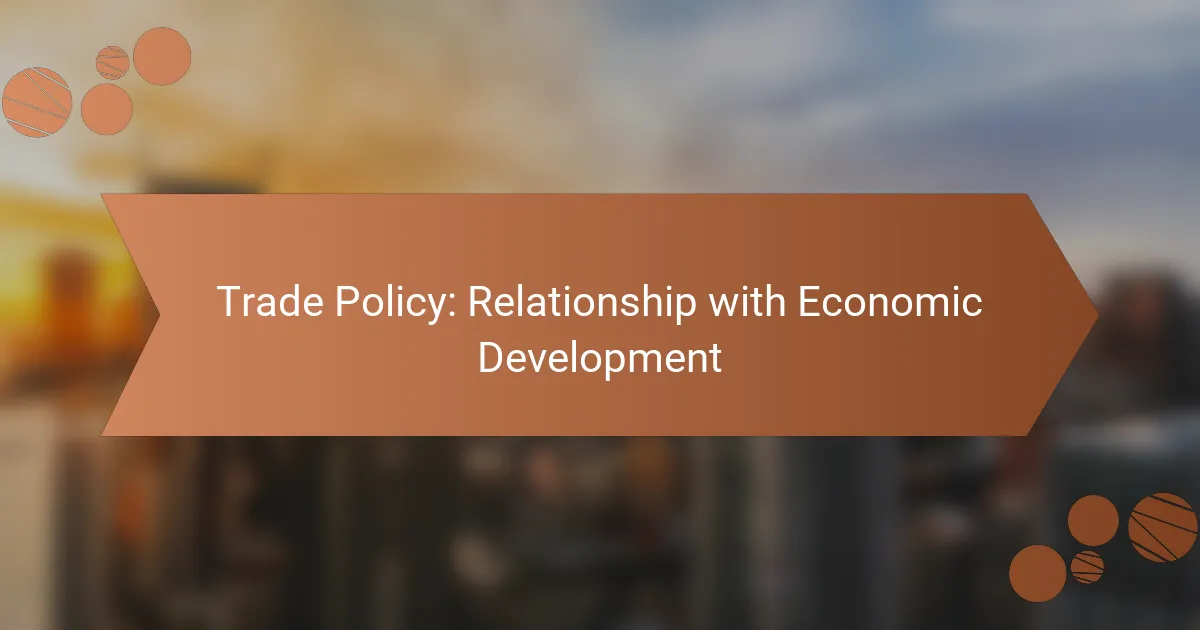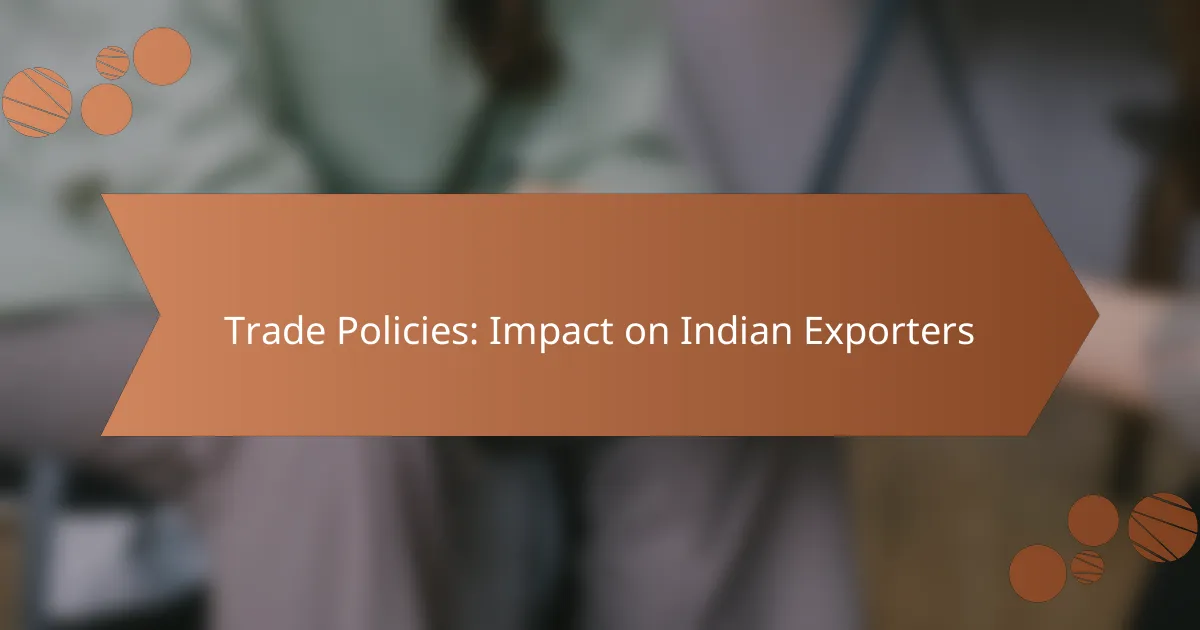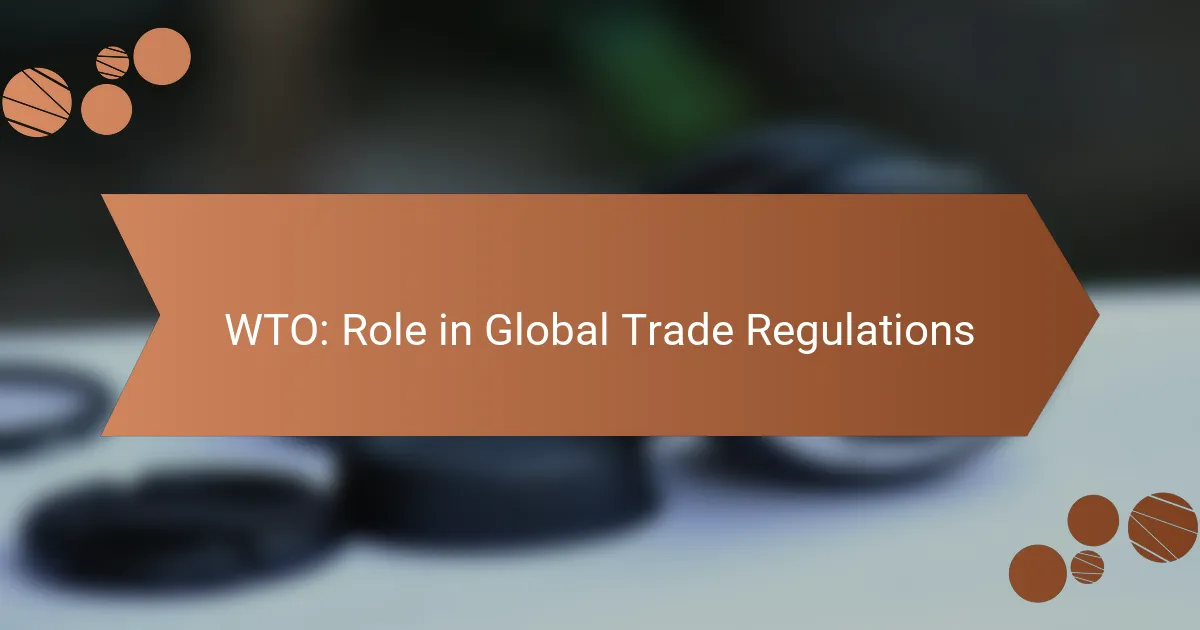As the global economy continues to evolve, trade policy is poised for significant transformation, particularly in the areas of digital trade, supply chain resilience, and sustainability. These developments will not only address the complexities of international commerce but also reshape the landscape for e-commerce, influencing shipping costs, pricing, and regulatory frameworks. By establishing clear rules through trade agreements, nations can enhance economic cooperation and improve market access, ultimately driving competitiveness in a rapidly changing marketplace.
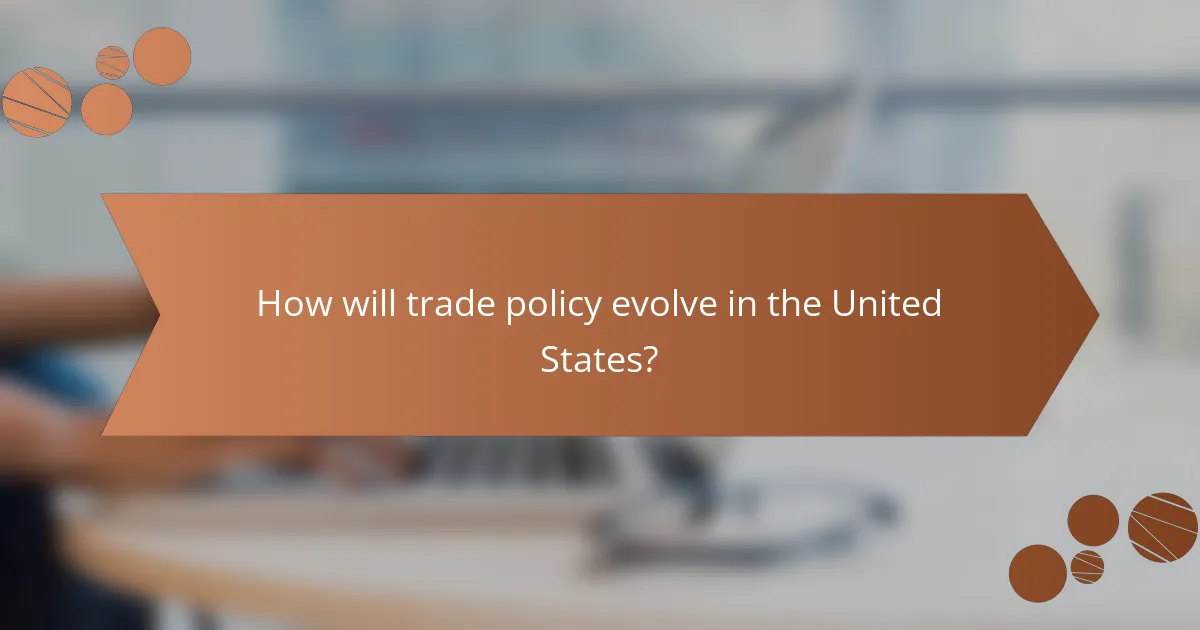
How will trade policy evolve in the United States?
Trade policy in the United States is set to evolve significantly, focusing on digital trade, supply chain resilience, and sustainability. These changes aim to adapt to the complexities of a globalized economy while addressing domestic and international challenges.
Increased focus on digital trade agreements
The U.S. is prioritizing digital trade agreements to facilitate cross-border data flows and reduce barriers to e-commerce. These agreements will likely include provisions for data privacy, cybersecurity, and intellectual property protection.
For example, recent discussions have highlighted the need for harmonizing regulations across countries to ensure a seamless digital marketplace. Companies should prepare for compliance with diverse standards as these agreements take shape.
Strengthening supply chain resilience
In response to recent disruptions, U.S. trade policy will emphasize strengthening supply chain resilience. This involves diversifying sources of critical goods and investing in domestic production capabilities.
Businesses should assess their supply chains for vulnerabilities and consider strategies such as nearshoring or building strategic stockpiles. The goal is to minimize reliance on single sources, particularly for essential products like semiconductors and medical supplies.
Emphasis on sustainability and environmental standards
Future trade policies will increasingly incorporate sustainability and environmental standards, reflecting a global shift towards greener practices. This may include stricter regulations on carbon emissions and incentives for sustainable sourcing.
Companies engaged in international trade should prepare for potential compliance with new environmental criteria, which could impact costs and operational practices. Embracing sustainable practices not only aligns with policy trends but can also enhance brand reputation and customer loyalty.

What are the implications of trade policy changes for e-commerce?
Changes in trade policy significantly impact e-commerce by altering shipping costs, product pricing, and regulatory requirements for online sellers. These shifts can affect market access, competitiveness, and overall profitability in the global marketplace.
Impact on cross-border shipping costs
Trade policy changes can lead to fluctuations in cross-border shipping costs, which directly influence e-commerce operations. For instance, increased tariffs on shipping services or new regulations may raise expenses, making it more expensive to deliver goods internationally.
Online sellers should anticipate potential increases in shipping fees and adjust their pricing strategies accordingly. It is advisable to regularly review shipping partners and explore options that offer competitive rates while ensuring timely delivery.
Changes in tariffs affecting product pricing
Tariff adjustments can significantly alter product pricing for e-commerce businesses. Higher tariffs on imported goods may compel sellers to increase prices to maintain profit margins, potentially reducing competitiveness in the market.
Sellers should stay informed about tariff changes in their target markets and consider sourcing products from countries with lower tariffs. This strategy can help mitigate price increases and maintain customer loyalty.
Regulatory compliance for online sellers
Changes in trade policy often introduce new regulatory compliance requirements for online sellers. These may include updated customs documentation, product safety standards, and data protection regulations that vary by country.
To navigate these complexities, e-commerce businesses should invest in compliance training and possibly consult legal experts. Staying proactive in understanding and implementing necessary regulations can prevent costly fines and disruptions in operations.

How do trade agreements influence global markets?
Trade agreements significantly shape global markets by establishing the rules and conditions under which countries exchange goods and services. They facilitate smoother transactions, enhance economic cooperation, and can lead to increased market access for participating nations.
Facilitation of international partnerships
Trade agreements foster international partnerships by creating a framework for cooperation between countries. These partnerships often lead to joint ventures, shared technologies, and collaborative projects that can enhance productivity and innovation.
For instance, agreements like the North American Free Trade Agreement (NAFTA) have allowed companies in the U.S., Canada, and Mexico to work together more effectively, boosting trade and investment flows among them.
Reduction of trade barriers
By reducing tariffs and other trade barriers, agreements make it easier and cheaper for countries to trade with one another. Lower tariffs can lead to price reductions for consumers and increased competitiveness for businesses.
For example, the European Union’s single market allows goods to move freely among member states without customs duties, which has significantly increased intra-EU trade. Countries outside the EU often seek trade agreements to gain similar access.
Impact on emerging markets
Trade agreements can have a profound impact on emerging markets by providing them with access to larger markets and attracting foreign investment. These agreements often include provisions that support economic development and capacity building.
Emerging markets that engage in trade agreements, such as those in Africa under the African Continental Free Trade Area (AfCFTA), can experience accelerated growth by tapping into new markets and diversifying their economies.
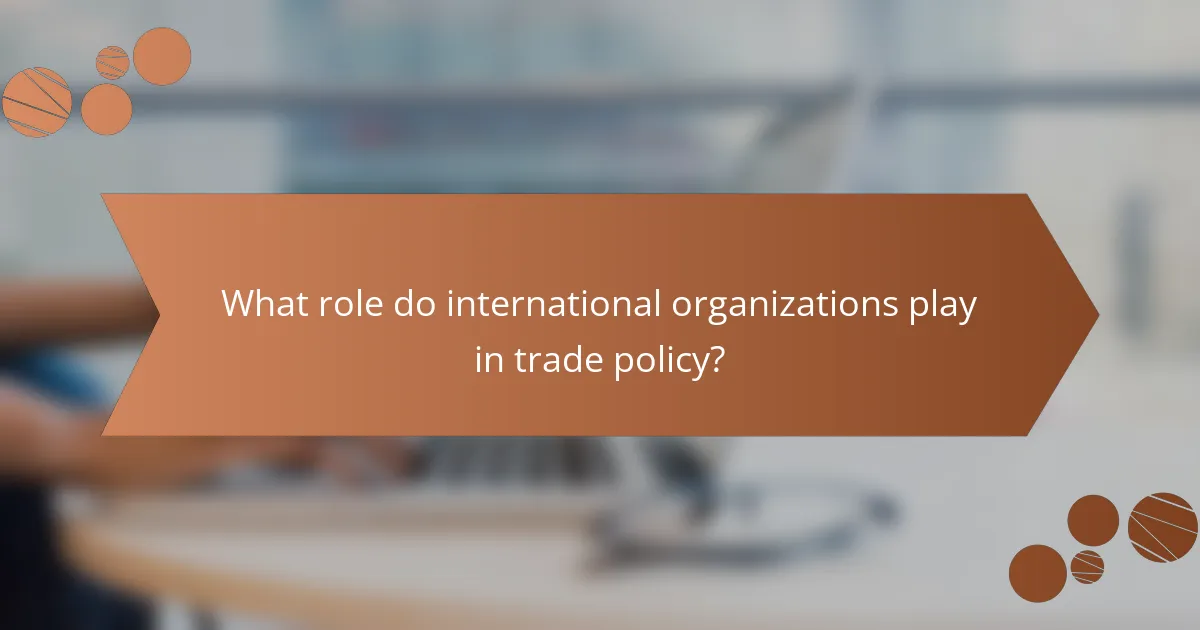
What role do international organizations play in trade policy?
International organizations are crucial in shaping trade policy by establishing rules, facilitating negotiations, and promoting cooperation among countries. They help ensure that trade flows smoothly and equitably, addressing disputes and fostering economic stability.
World Trade Organization (WTO) regulations
The World Trade Organization (WTO) sets the global framework for trade agreements and dispute resolution. Its regulations aim to create a level playing field by reducing tariffs and eliminating trade barriers, which can enhance market access for member countries.
Countries must adhere to WTO rules when engaging in international trade, which include commitments to transparency and non-discrimination. For example, members are required to notify the WTO of any trade measures that could affect other countries, ensuring accountability.
Influence of the International Monetary Fund (IMF)
The International Monetary Fund (IMF) plays a significant role in trade policy by providing financial assistance and policy advice to countries facing economic challenges. Its support can help stabilize economies, which in turn promotes a more favorable environment for trade.
IMF programs often encourage countries to adopt reforms that enhance trade competitiveness, such as improving fiscal policies or reducing inflation. For instance, when a country receives IMF assistance, it may implement measures that lead to a more open and stable trading system, benefiting both domestic and international markets.

How can businesses adapt to changing trade policies?
Businesses can adapt to changing trade policies by implementing strategies that enhance flexibility and compliance. This involves diversifying supply chains, investing in technology for regulatory adherence, and actively engaging in advocacy efforts to influence policy decisions.
Diversifying supply chains
Diversifying supply chains allows businesses to mitigate risks associated with trade policy changes. By sourcing materials and products from multiple countries, companies can reduce dependency on any single market, which is crucial when tariffs or trade restrictions arise.
For example, a manufacturer that previously relied solely on suppliers in one region might explore alternatives in other countries. This approach not only spreads risk but can also lead to cost savings and improved negotiation power.
Investing in compliance technologies
Investing in compliance technologies helps businesses stay ahead of evolving trade regulations. Tools that automate tracking of tariffs, trade agreements, and regulatory changes can significantly reduce the burden of manual compliance efforts.
Companies should consider software solutions that provide real-time updates on trade policies and assist in documentation processes. This investment can lead to lower penalties and smoother operations as regulations change.
Engaging in policy advocacy
Engaging in policy advocacy enables businesses to influence trade policies that affect their operations. By joining industry associations or lobbying groups, companies can collectively voice their concerns and push for favorable regulations.
Active participation in discussions with policymakers can help businesses not only understand upcoming changes but also shape them. This proactive approach can lead to more favorable conditions for trade and reduce uncertainty in the market.
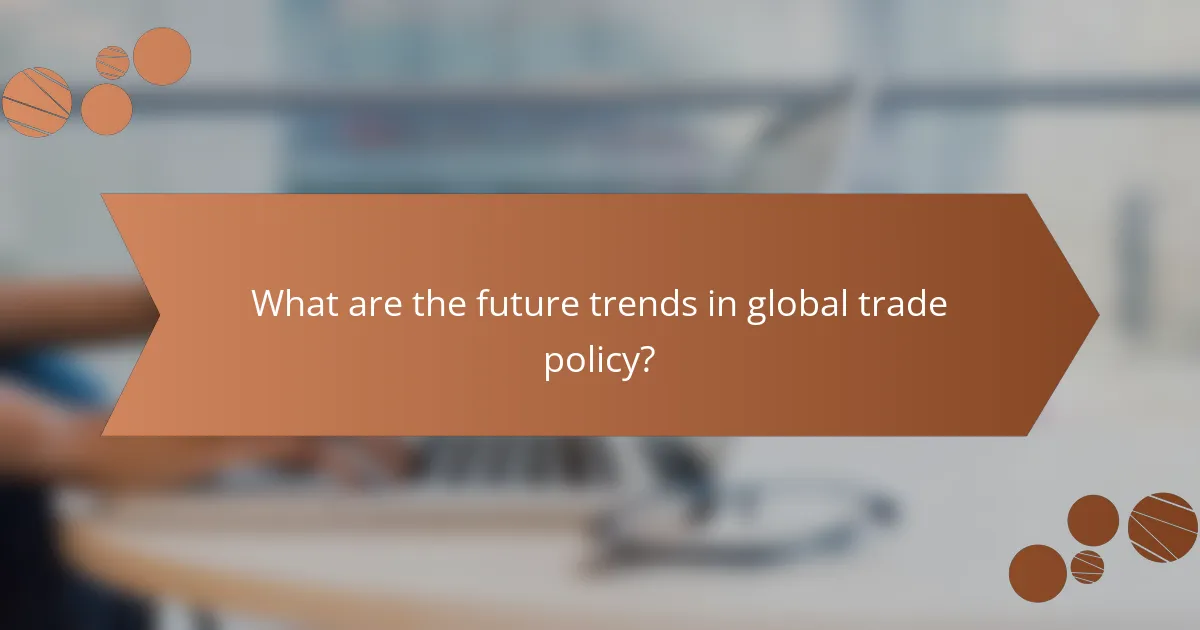
What are the future trends in global trade policy?
Future trends in global trade policy are increasingly characterized by a shift towards protectionism, digital trade regulations, and sustainability initiatives. These trends reflect the evolving priorities of nations as they navigate economic challenges and geopolitical tensions.
Rise of protectionism in major economies
The rise of protectionism in major economies is evident as countries implement tariffs and trade barriers to protect domestic industries. This trend often arises from concerns over job losses and economic instability, leading governments to prioritize local production over international trade.
For example, the United States and several European nations have introduced tariffs on imports from specific countries, aiming to support local manufacturers. This can result in increased costs for consumers and potential retaliation from trading partners, creating a cycle of escalating trade tensions.
Businesses should be aware of these protectionist measures and consider strategies such as diversifying supply chains or exploring markets less affected by tariffs. Staying informed about trade policies can help companies adapt and maintain competitiveness in a changing global landscape.

